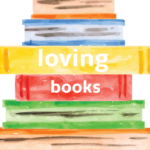
28 Mar Multiculturalism through young eyes
Kellie Haratsis comes to understand that multiculturalism is normal to a five year old.
Some changes in life are easy; others challenge our thoughts and actions. Recently, our family moved from the country to Australia’s largest capital city. We had no time to explore options for the perfect location, but we were very adaptable.
We settled in a very multicultural part of the city, which meant a lesson in cultural immersion and acceptance. With open minds and hearts we ventured forth to form friendships, alliances and a village of support, only to be met with communication breakdown from language and cultural barriers. I feared approaching someone in case they couldn’t understand what I was saying, fearing offending others through religious or cultural naivety, and fearing not being accepted in a community where I was no longer in the racial majority.
These fears coincided with another big change in our lives. My five-year-old daughter was starting school – a big milestone on its own but a big lesson for her, too. As I watched her walk through the school gates, I felt my own fears all over. Would she be accepted into this multicultural world? Would she be excluded for not speaking two languages? Would the other children care that she does not look or sound like them or eat the same foods? All the precious things that make us special and individual I feared would hinder her acceptance and friendships.
As I waited for the afternoon bell, I saw three little girls walking hand in hand down the path. They all had different coloured skin and hair. They were talking about puppies and kittens with different accents and tones. Their laughter was universal. After a moment, I realised one of them was my daughter, beaming with happiness and excitement. Her fingers were interlocked with her new friends. Warm hugs followed, again with laughter, as all three waved until they could no longer see each other in the distance.
That evening brought the most clarity I’d had since this big change in our lives. Sitting with my daughter, she told me how Sakhi* had brown skin while hers was white. Sakhi shared some lunch with her, and it was so tasty she wanted me to learn to cook it – something I later learned was pakora bread. I also learned that Mei-Lien* had short black hair, just like mine. Mei-Lien also had a Barbie mermaid just like my daughter’s, and my daughter wanted to take hers to school the next day so they could play together.
These revelations may not seem ground-breaking to many, but they struck a chord with me. Multiculturalism is a term I’ve heard repeatedly throughout my life. It was all about the melting pot and acceptance of each other. That evening with my daughter, I realised there has been a generational shift in the way multiculturalism is viewed, a shift I hope will remain with her. As I watch my daughter sing ‘Head, Shoulders, Knees And Toes’ in Japanese, I can finally see what multiculturalism is from a five year old’s perspective – normality. It is the norm for my daughter, an organic acceptance I hope will never change.
* Name has been changed


